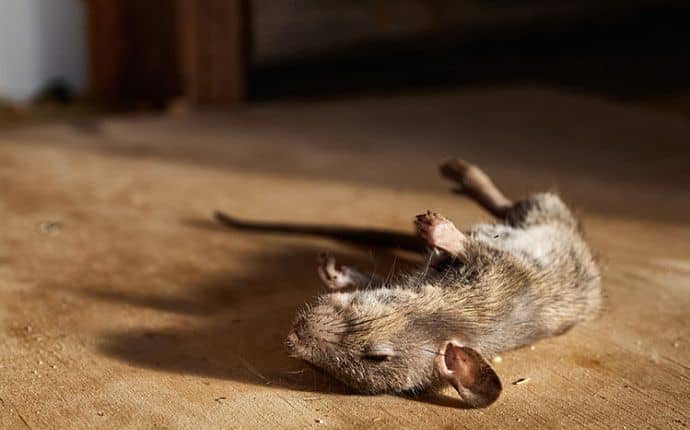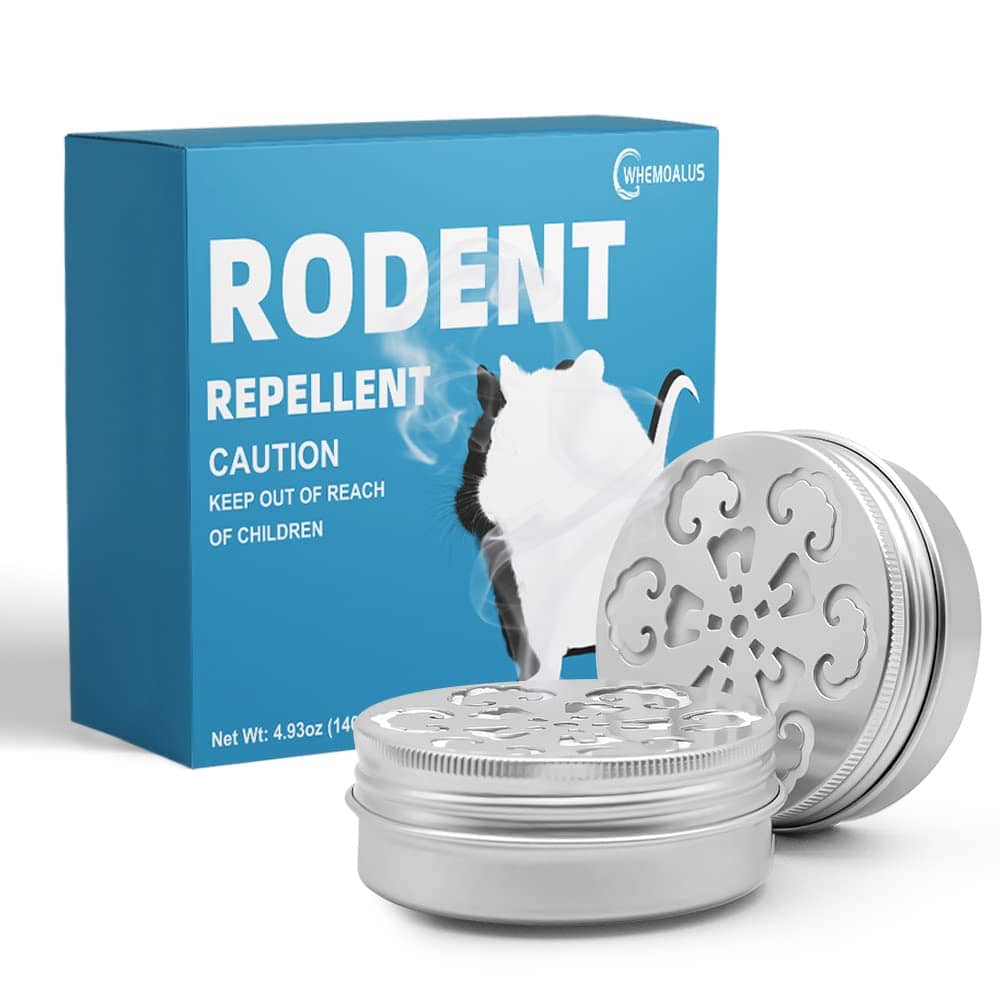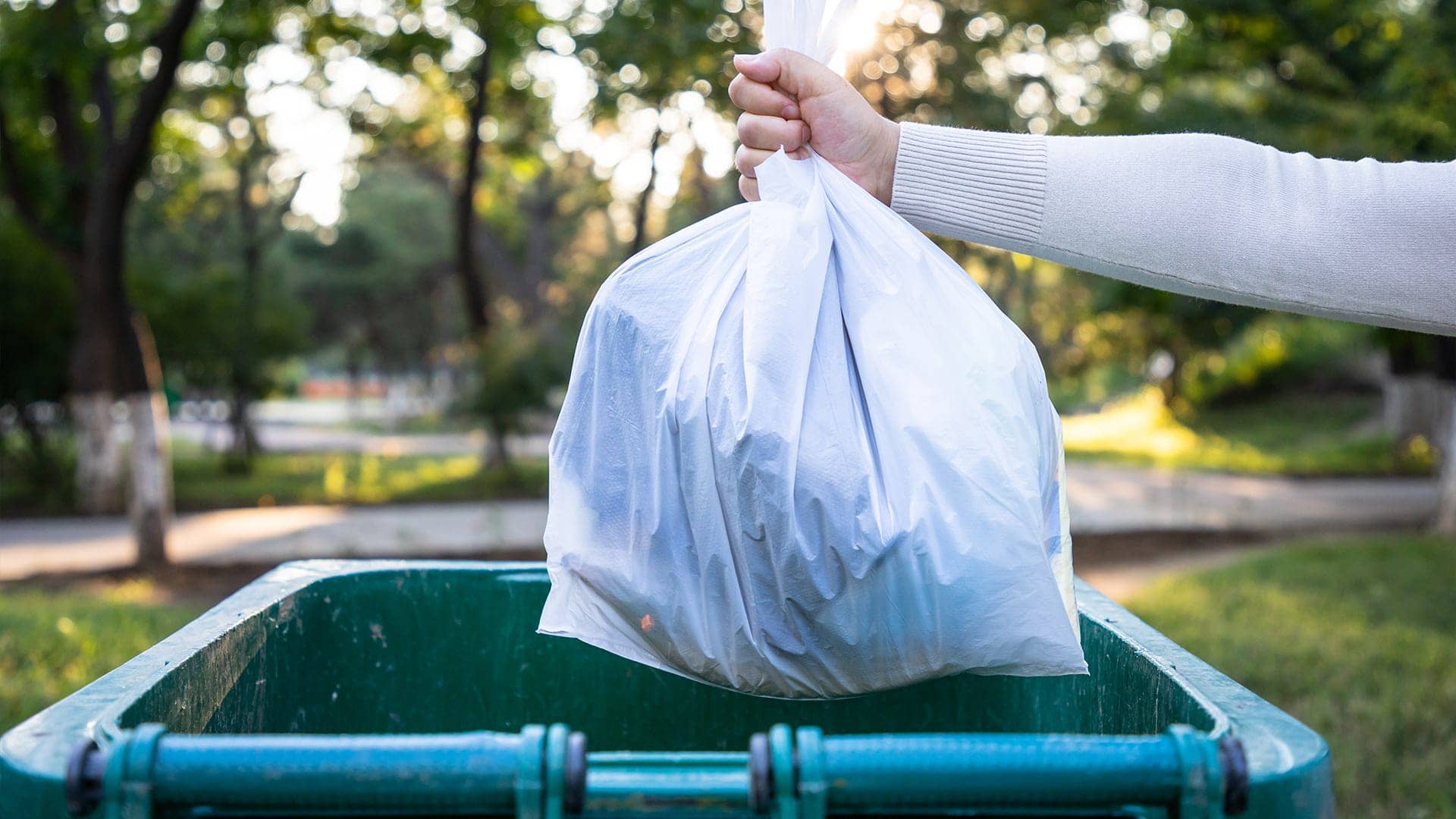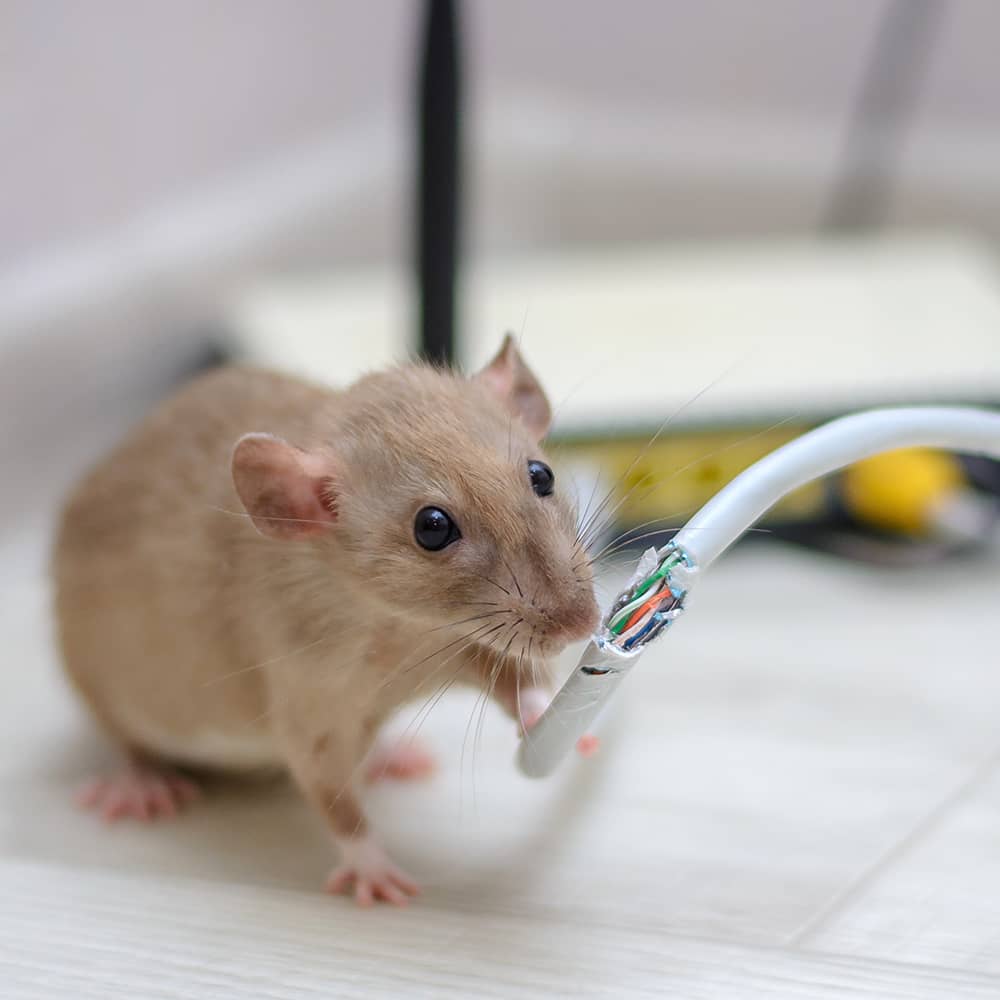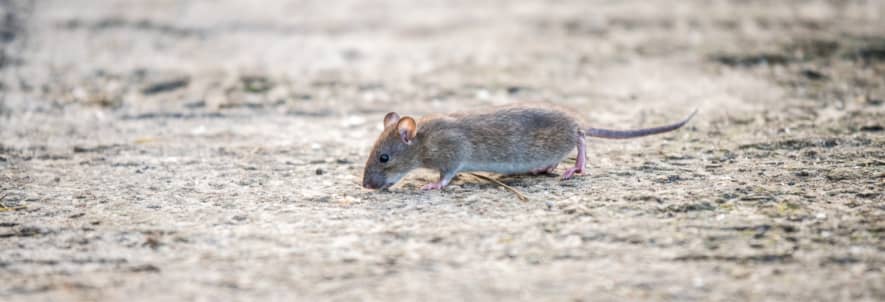To deodorize and sanitize after removing dead mice, it is important to thoroughly clean the affected area using a disinfectant solution. Proper cleaning and disinfection will help eliminate any lingering odors and ensure a hygienic environment.
Additionally, it is recommended to seal any potential entry points to prevent future infestations and to dispose of any contaminated materials safely. Taking these steps will help maintain a clean and pest-free space.
Importance Of Deodorizing And Sanitizing After Removing Dead Mice
After removing dead mice, it is essential to deodorize and sanitize the area to eliminate any lingering odor and ensure a hygienic space. This step is crucial in preventing the spread of diseases and maintaining a safe and healthy environment.
Dealing with a mouse infestation is not only unpleasant but can also pose serious health risks if not taken care of properly. Once you have successfully removed the dead mice from your home or workplace, it is crucial to prioritize deodorizing and sanitizing the affected areas.
The importance of this step cannot be overstated, as it helps ensure a clean and healthy environment free from any lingering contaminants. Let’s explore why deodorizing and sanitizing after removing dead mice is necessary, along with the potential health risks of neglecting this crucial task.
Why Deodorizing And Sanitizing Is Necessary After Mouse Removal:
Deodorizing and sanitizing play a vital role in effectively getting rid of mouse-related odors, bacteria, and potential health hazards. Here are some reasons why this step is essential:
- Eliminate unpleasant odors: Dead mice can emit a foul smell that can linger in your home, causing discomfort for you and any visitors. Deodorizing helps neutralize these odors, creating a fresh and pleasant environment.
- Prevent the spread of diseases: Mice carry numerous diseases and bacteria, some of which can be harmful to humans. Thorough sanitization helps eliminate any traces of these pathogens, reducing the risk of infection.
- Avoid attracting other pests: The scent of dead mice can attract other pests, such as flies and beetles, looking for a source of food. Proper deodorizing and sanitizing discourage these pests from invading your space.
- Enhance indoor air quality: By deodorizing and sanitizing, you improve the overall air quality in your home. This is particularly important if you or your family members suffer from respiratory issues or allergies.
Potential Health Risks If Deodorizing And Sanitizing Is Not Done Properly:
Neglecting to deodorize and sanitize after removing dead mice can have severe consequences on both your health and well-being. Here are some of the potential health risks associated with improper deodorizing and sanitizing:
- Spread of diseases: Dead mice can carry a multitude of diseases such as hantavirus, leptospirosis, and salmonellosis. Without proper sanitization, these harmful pathogens can persist, increasing the chance of transmission to humans, leading to serious health problems.
- Increased allergies and respiratory issues: Mice droppings, urine, and carcasses contain allergens and can trigger allergic reactions or worsen existing respiratory issues like asthma. Failure to sanitize these areas may result in continued exposure to these allergens, leading to persistent symptoms.
- Attracting more pests: The strong scent of dead mice can attract other pests, including flies, ants, or beetles. These pests not only create a nuisance but also bring their own set of health risks and make it harder to maintain a clean living environment.
Proper deodorizing and sanitizing after mouse removal is crucial to maintain a healthy and pest-free environment. By eliminating odors, removing potential disease-causing pathogens, and improving indoor air quality, you can protect yourself and your loved ones from the risks associated with mouse infestations.
Don’t overlook this essential step in ensuring a safe and pleasant living space.
Steps To Take Before Deodorizing And Sanitizing
Before deodorizing and sanitizing the area, it is crucial to remove dead mice properly. Take time to clean the affected space thoroughly and eliminate any bacteria or odor left behind. Ensure a safe and hygienic environment by following these necessary steps.
Removing dead mice from your home is just the first step in getting rid of the unpleasant odor and ensuring a clean and sanitized environment. Before you proceed to deodorize and sanitize the affected area, there are a few essential steps you should take.
These steps will not only help eliminate any remaining traces of the infestation but also prevent future rodent problems. Here’s what you need to do:
- Proper disposal of dead mice and cleaning up any visible debris:
- Put on disposable gloves and carefully place the dead mice in a sealed plastic bag.
- Double-bag the carcasses to ensure there is no contact with the outside environment.
- Dispose of the bag in an outdoor garbage bin or as per local regulations.
- Thoroughly clean any visible droppings, urine, or nesting materials using a paper towel or disposable cloth.
- Avoid sweeping or vacuuming as it may stir up allergens and pathogens present in the debris.
- Identifying and sealing entry points to prevent future infestations:
- Inspect the area for any openings or gaps in walls, floors, or vents that mice may have used as entry points.
- Seal these entry points using materials such as steel wool, caulk, or wire mesh.
- Focus on areas around pipes, utility lines, air vents, and gaps in the foundation.
- Pay attention to spaces around doors and windows, as mice can enter through even the smallest openings.
- Regularly inspect and repair any damage to your home’s exterior that could serve as an invitation to rodents.
Taking these steps before deodorizing and sanitizing will ensure that your efforts are more effective in removing dead mouse odor and reducing the risk of future infestations. By properly disposing of the carcasses and debris and sealing entry points, you’ll create a cleaner and safer environment for your home or office.
Deodorizing Methods
After removing dead mice, it is essential to deodorize and sanitize the area effectively. Using specialized methods, you can eliminate odors and ensure a clean and hygienic space.
After removing dead mice from your home, it’s important to take steps to eliminate any lingering odors. Nobody wants their living space to smell like a decomposing rodent! Luckily, there are several effective deodorizing methods to help freshen up your home.
Let’s explore two popular options:
Using Natural Deodorizers Such As Baking Soda Or Vinegar:
- Baking soda: Sprinkling baking soda on the affected areas is an affordable and readily available solution. Its odor-absorbing properties help neutralize unpleasant smells. Simply sprinkle a generous amount of baking soda over the affected areas and let it sit for a few hours before vacuuming it up.
- Vinegar: This versatile household ingredient is known for its ability to combat odors. Create a mixture of equal parts vinegar and water, then spray it onto the surfaces where the dead mice were removed. Allow it to air dry or wipe it clean with a cloth. The acidic nature of vinegar helps eliminate odor-causing bacteria.
Odor Eliminating Sprays And Commercial Deodorizing Products:
- Odor eliminating sprays: There are various sprays available on the market specifically designed to neutralize odors. These sprays contain substances that bind to and eliminate the molecules responsible for unpleasant smells. Simply follow the instructions on the product label to effectively deodorize the affected areas.
- Commercial deodorizing products: Many companies offer specialized deodorizing products that are formulated to tackle pet odors, including the scent of decomposing mice. These products often contain enzymes that break down organic matter, effectively eliminating foul smells in your home. Be sure to carefully read the product instructions and warnings to ensure safe and effective usage.
By utilizing natural deodorizers like baking soda or vinegar, or opting for odor eliminating sprays and commercial deodorizing products, you can successfully remove unpleasant odors left behind after removing dead mice from your home. Say goodbye to lingering smells and enjoy a fresh and odor-free living environment once again!
Sanitizing Methods
After removing dead mice, it is crucial to deodorize and sanitize the area to eliminate any lingering odors and potential health risks. Effective methods include using disinfectants and odor neutralizers to ensure a clean and safe environment.
After removing dead mice from your home, it is crucial to take proper steps to sanitize and deodorize the affected areas. This will not only eliminate any lingering odors but also ensure that the space is safe and free from harmful bacteria and germs.
Here are some effective methods for sanitizing after removing dead mice:
- Cleaning affected areas with disinfectant solutions: Properly cleaning the areas where the dead mice were found is the first step in the sanitization process. Use a disinfectant solution to wipe down all surfaces, paying close attention to areas that may have come into direct contact with the mice or their bodily fluids. Be sure to wear gloves and follow the instructions on the disinfectant product for best results.
- Use of steam cleaners to eliminate bacteria and germs: Steam cleaning is a powerful method for killing and removing bacteria and germs. It can reach into crevices and cracks that are difficult to access with traditional cleaning methods. Use a steam cleaner on affected areas such as carpets, floors, walls, and furniture. The heat generated by the steam will effectively sanitize the surfaces and remove any lingering odors.
- Proper disposal of contaminated materials: It is essential to dispose of any contaminated materials properly. This includes dead mice, as well as cleaning materials, gloves, and other items that have come into contact with the rodents. Seal the waste in a plastic bag and dispose of it in an outdoor trash can to prevent the spread of disease.
- Ventilation and fresh air: After sanitizing the affected areas, it is crucial to allow fresh air to circulate throughout the space. Open windows and use fans to improve ventilation, which will help dissipate any remaining odors and promote faster drying of the surfaces.
- Regular cleaning and maintenance: To prevent future infestations and maintain a clean and sanitary environment, it is important to implement regular cleaning and maintenance practices. This includes keeping food stored securely, sealing any entry points, and regularly cleaning and disinfecting the areas where mice are commonly found.
Sanitizing after removing dead mice is essential to ensure a clean, safe, and hygienic environment in your home. By following these effective methods, you can eliminate odors, bacteria, and germs, creating a healthy living space for you and your family.
Safety Precautions To Take
After removing dead mice, it is important to take safety precautions by deodorizing and sanitizing the area. This helps to eliminate any lingering odors and prevent the spread of bacteria and diseases associated with rodents. Keep your space clean and safe with these necessary steps.
When it comes to deodorizing and sanitizing after removing dead mice, it’s important to prioritize safety. By taking the right precautions, you can ensure your well-being while effectively eliminating any lingering odors and bacteria. Here are some essential safety measures to keep in mind:
Use Of Gloves, Masks, And Other Protective Gear:
- Wear disposable gloves made of latex or nitrile to protect your hands from direct contact with any potentially harmful substances.
- Put on a well-fitted mask or respirator to prevent inhaling any dust, allergens, or foul odors released during the cleaning process.
- Consider wearing safety goggles to shield your eyes from any splashes or debris that might be released.
- Use sturdy footwear, such as closed-toe shoes or boots, to safeguard your feet from accidental spills or sharp objects.
Proper Ventilation During Deodorizing And Sanitizing Process:
- Open up the windows and doors in the area you’re working in to ensure proper airflow and ventilation. This helps in reducing the concentration of cleaning chemicals and unpleasant odors.
- Make use of fans or portable air purifiers to circulate fresh air and assist in eliminating any lingering smells.
- If you have a central ventilation system, ensure that it’s turned on during the cleaning process to aid in removing any airborne particles or odors.
By adhering to these safety precautions, you can minimize potential risks and make the deodorizing and sanitizing process after removing dead mice both efficient and safe. Remember, your health and well-being should always be a priority when dealing with potentially hazardous substances.
Preventing Future Infestations
After removing dead mice, it is crucial to deodorize and sanitize the area to prevent future infestations. By eliminating odors and disinfecting surfaces, you can create an environment that is less attractive to pests and ensure a pest-free home.
When it comes to preventing future infestations after removing dead mice, regular cleaning and maintenance play a crucial role. By implementing proper measures, you can keep these unwanted pests away from your home. Here are some effective strategies to consider:
- Sealing potential entry points: Identify and seal off any openings in your home that mice can use as entry points. Pay close attention to cracks in walls, gaps around windows and doors, and openings around utility pipes. Use sealant or caulk to close these gaps effectively.
- Blocking access to food sources: Mice are attracted to food, so it’s vital to deny them access to their primary sustenance. Here’s how you can achieve that:
- Store food in airtight containers: By keeping your food secure in sealed containers, you prevent mice from sniffing out their next meal.
- Clean up spills and crumbs promptly: Wipe down surfaces and sweep floors regularly to eliminate any food remnants that might entice mice.
- Dispose of garbage properly: Seal garbage bags tightly and store them in bins with secure lids.
- Secure pet food: Place pet food bowls on trays and store any leftover food in sealed containers.
- Regular cleaning and maintenance to keep mice away: Implementing a cleaning routine can go a long way in deterring mice. Here are a few essential tasks to include:
- Vacuum regularly: Regularly vacuum and clean your floors, including hard-to-reach areas such as corners and baseboards.
- Sweep outdoor spaces: Remove debris and fallen leaves from your yard and around your house to create an uninviting environment for mice.
- Proper waste management: Trim vegetation near your home, as overgrown plants can attract mice by providing shelter for them.
- Monitor for signs of infestation: Keep an eye out for any indication of mice droppings, chewed wires, gnaw marks, or strange odors. Promptly address these signs to prevent an infestation.
Taking these measures will significantly reduce the likelihood of future infestations, creating a clean and unappealing environment for mice. Remember, ongoing vigilance is key to keeping these pests out of your home.
Signs That Professional Help Is Needed
After removing dead mice, signs that professional help is needed include persistent odor, unsanitary conditions, and potential health risks. Deodorizing and sanitizing are crucial to ensure a clean and safe environment.
Despite your best efforts to deodorize and sanitize after removing dead mice, there are certain situations where it becomes evident that professional help is necessary. Here are some signs to look out for:
- Persistent odor despite deodorizing efforts:
- The foul smell from the dead mice remains even after extensive deodorizing attempts.
- The odor seems to be spreading or getting worse, indicating possible hidden carcasses or hard-to-reach areas.
- The stench persists for more than a week, suggesting the need for professional odor removal techniques.
- Extensive damage caused by mice infestations:
- Evidence of chewed wires, gnawed furniture, or damaged insulation suggests a severe infestation that requires expert intervention.
- Frequent sightings of live mice, especially during daytime, indicate a large and active infestation.
- Trails of droppings, urine stains, and greasy marks found in multiple areas of your home suggest a widespread problem demanding professional pest control measures.
When encountering these signs, it is crucial to call in professional help to effectively resolve the issues at hand. Remember, by promptly seeking professional assistance, you can ensure the complete removal of the odor and the eradication of the mice infestation, leaving your home clean, safe, and pest-free.

Credit: www.amazon.com
Frequently Asked Questions For Deodorizing And Sanitizing After Removing Dead Mice
How Long Does Dead Mouse Smell Last After Removal?
The smell of a dead mouse typically lasts for about a week after removal.
What Kills The Smell Of Dead Mice?
The smell of dead mice can be eliminated by using odor-eliminating products or by hiring professional extermination services.
How Many Days After A Mouse Dies Does It Smell?
The smell of a dead mouse can usually begin within a few days after its demise.
Do Dead Mice Release Toxins?
Yes, dead mice release toxins that can be harmful to humans and pets.
Conclusion
When it comes to deodorizing and sanitizing after removing dead mice, it is crucial to take swift action to ensure the eradication of any lingering odors and potential health hazards. Using a combination of natural remedies and commercial disinfectants, you can effectively eliminate the odor and clean the affected areas.
By using vinegar, baking soda, or ozone generators, you can neutralize unpleasant smells and sanitize surfaces. Regularly cleaning and disinfecting your home can help prevent future rodent infestations and ensure a healthy living environment for you and your family. Remember to seal any entry points to prevent further rodent infiltrations.
It is wise to seek professional help if the infestation is severe or persistent. By following these steps, you can successfully deodorize and sanitize your home after removing dead mice, restoring a fresh and clean living space.
